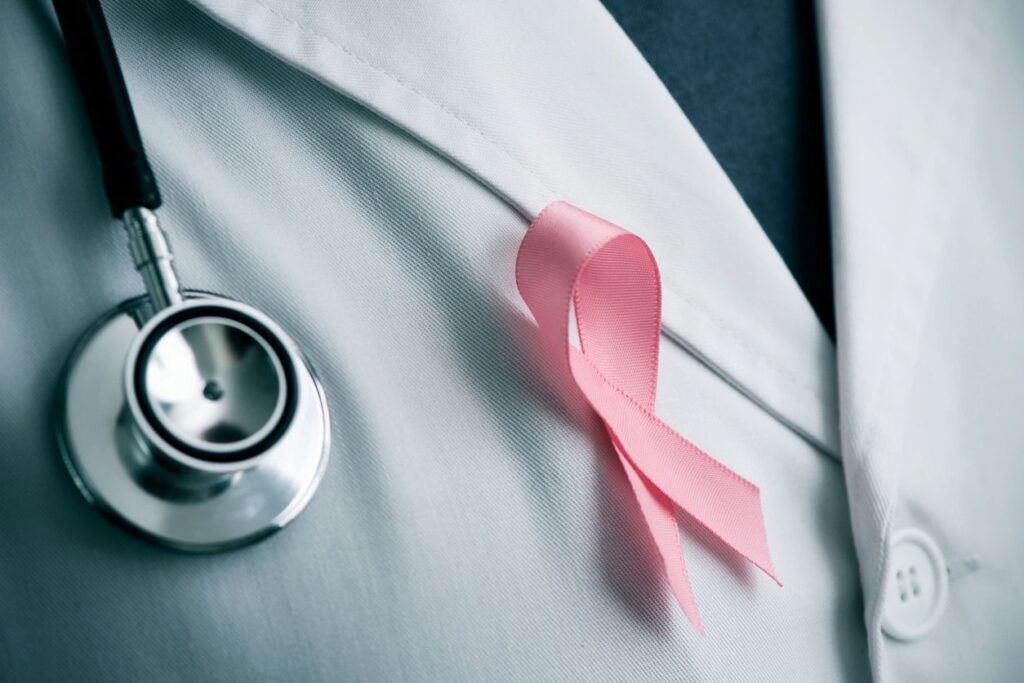
By: Pamela Stern
According to the Centers for Disease Control (CDC), October is National Breast Cancer Awareness Month, and October 19th has been designated National Mammography Day. The National Breast Cancer Foundation Inc. (NBCFI) states that one in eight women in the United States will be diagnosed with breast cancer in her lifetime.
In 2023, an estimated 297,790 women and 2,800 men will be diagnosed with breast cancer. There is hope when it is caught in its earliest, stages, that the 5-year relative survival rate is 99%. Advances in early detection and treatment methods have significantly increased breast cancer survival rates in recent years, and there are currently over 3.8 million breast cancer survivors in the United States.
What is Breast Cancer?
Breast Cancer is a disease where malignant (cancer) cells form in the tissues of the breast. There are many different types of breast cancer that can affect both women and men. In order to determine the extent of an individual’s breast cancer and if it has spread outside of the breast, the cancer is assigned a stage and diagnosis. Early detection through annual mammography and other breast exams are the best defense against receiving a late-stage breast cancer diagnosis. The earlier the cancer is detected, will help to receive a successful outcome.
Some Statistics about Breast Cancer
There are currently over 3.8 million breast cancer survivors in the United States. It is estimated that 43,700 U.S. women will die from breast cancer in 2023. The risk of breast cancer reoccurrence depends on the type and stage of the initial breast cancer diagnosis.
The highest risk of recurrence is during the first few years after treatment and decreases over time. Breast cancer is the most common cancer in American women, except for skin cancers. On average, every 2 minutes a woman is diagnosed with breast cancer in the United States. Approximately 15% of women diagnosed have a family history of breast cancer.
Those with a first-degree relative (mother, sister, daughter) with breast cancer are nearly twice as likely to develop breast cancer themselves. In the United States, breast cancer occurs primarily in middle-aged and older women, but age is not the only risk factor for a breast cancer diagnosis. There are many risk factors aside from age that may contribute to a breast cancer diagnosis, and sometimes there are no risk factors at all. The average age of U.S. women diagnosed with breast cancer is 62 years old and half of them who develop breast cancer are 62 or younger when they are diagnosed.
About 9% of all new breast cancer cases in the U.S. are diagnosed in women younger than 45 years old. Younger people underage of 35 at the time of their original breast cancer diagnosis, face a higher risk of recurrence.
In the US, breast cancer occurs within every racial and ethnic group. However, here are some statistics across the different groups.
Black Women:
- The average age of Black women diagnosed with breast cancer is 60 years old, compared to an average age of 62 for white women.
- Black women are 40% more likely to die from breast cancer than white women. Black women have the lowest 5-year relative breast cancer survival rate of any racial or ethnic group.
- 1 in 5 Black women with breast cancer are diagnosed with triple-negative breast cancer, which is harder to treat. This is higher than any other racial or ethnic group.
Hispanic Women:
- Hispanic women have a 20% lower incidence rate of breast cancer than other groups.
- Hispanic women are more likely than white women to be diagnosed with breast cancer at later stages which is more difficult to treat.
- Breast cancer is the leading cause of cancer death for Hispanic women.
Asian, Pacific Islander, American Indian, and Alaska Native Women:
- Asian and Pacific Islander women are more likely to be diagnosed with localized (earlier stage, more treatable) breast cancer than other groups.
- Asian and Pacific Islander women have the lowest death rate from breast cancer.
- American Indian and Alaska Native women have the lowest incidence rate of developing breast cancer.
- Chinese and Japanese women have the highest breast cancer survival rates.
If you are looking for an event to go to or to make a donation for Breast Cancer, The Brooklyn Sports Club (BSC) will be raising money for Breast Cancer Awareness throughout the month of October and all of the proceeds will go to the Memorial Sloan Kettering Foundation. The BSC will be having a Pink Week that will be starting on Sunday, October 22nd through Saturday, October 28th, for more information please call The Brooklyn Sports Club at 718-642-2720



